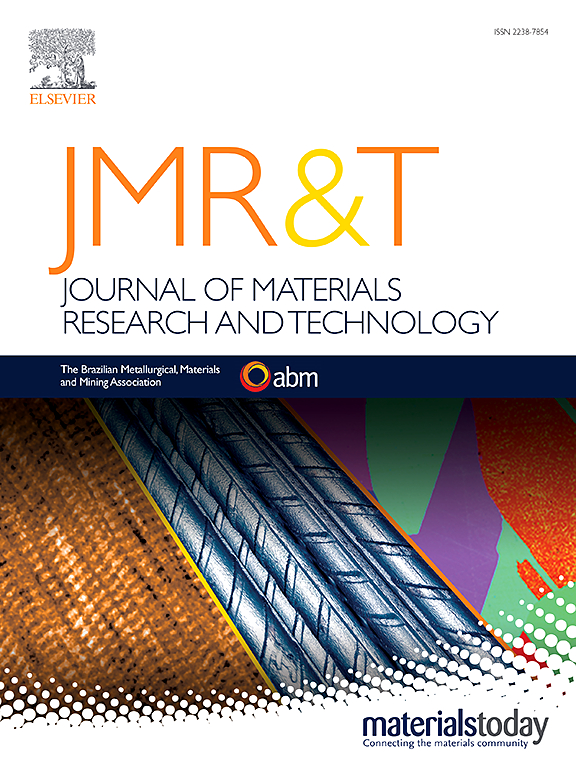Effect of reduced ambient pressure on weld formability, microstructure and corrosion behaviors in laser beam welding of zirconium alloy
IF 6.2
2区 材料科学
Q1 MATERIALS SCIENCE, MULTIDISCIPLINARY
Journal of Materials Research and Technology-Jmr&t
Pub Date : 2025-05-01
DOI:10.1016/j.jmrt.2025.05.138
引用次数: 0
Abstract
Welding zirconium alloys is a critical challenge in the nuclear industry owing to their high sensitivity to hydrogen and oxygen at high temperatures. This study explored the feasibility of vacuum laser welding as an alternative to conventional electron beam welding. The effects of reduced ambient pressure on weld formability, microstructure, and corrosion behavior were investigated. The results indicated a significant increase in the weld penetration depth and aspect ratio as the ambient pressure decreased from 101 kPa to 0.1 kPa. Low-vacuum conditions produced sound welds with improved surface quality and high aspect ratios. The molten pool and keyhole behaviors at different ambient pressures were experimentally and theoretically studied. The results revealed that a reduced ambient pressure transformed the welding process from thermal conductivity welding to deep keyhole welding. A larger molten pool and stable keyhole were observed in low vacuum, whereas atmospheric conditions resulted in a smaller molten pool obscured by bright plasma plumes. Microstructural analysis of welds under atmospheric and low-vacuum conditions revealed the growth of columnar crystals from both sides toward the center. Moreover, larger equiaxed crystals were observed in vacuum-welded joints owing to prolonged exposure to high temperatures, resulting from the increased heat input under low-vacuum conditions. A high-temperature, high-pressure corrosion test demonstrated that oxide film thickness gradually decreased with decreasing environmental pressure. The weld produced at 0.1 kPa exhibited excellent corrosion resistance, forming a black oxide film with good adhesion. This oxide film enhances the corrosion resistance of the weld, making it suitable for nuclear applications.
降低环境压力对锆合金激光焊接成形性能、显微组织及腐蚀行为的影响
由于锆合金在高温下对氢和氧的高度敏感性,焊接锆合金是核工业的一个关键挑战。本研究探讨了真空激光焊接替代传统电子束焊接的可行性。研究了降低环境压力对焊缝成形性能、显微组织和腐蚀行为的影响。结果表明,当环境压力从101 kPa降低到0.1 kPa时,焊缝熔深和长径比显著增加。低真空条件下产生了良好的焊缝,改善了表面质量和高纵横比。对不同环境压力下熔池和锁孔行为进行了实验和理论研究。结果表明,环境压力的降低使焊接过程由导热焊转变为深小孔焊。在低真空条件下观察到较大的熔池和稳定的锁孔,而在大气条件下,明亮的等离子体羽流遮挡了较小的熔池。在大气和低真空条件下,焊缝的显微组织分析显示,柱状晶体从两侧向中心生长。此外,在低真空条件下,由于长时间暴露在高温下,热量输入增加,在真空焊接接头中观察到更大的等轴晶体。高温高压腐蚀试验表明,随着环境压力的降低,氧化膜厚度逐渐减小。在0.1 kPa下产生的焊缝具有良好的耐腐蚀性能,形成一层黑色氧化膜,附着力好。这种氧化膜增强了焊缝的耐腐蚀性,使其适用于核应用。
本文章由计算机程序翻译,如有差异,请以英文原文为准。
求助全文
约1分钟内获得全文
求助全文
来源期刊

Journal of Materials Research and Technology-Jmr&t
Materials Science-Metals and Alloys
CiteScore
8.80
自引率
9.40%
发文量
1877
审稿时长
35 days
期刊介绍:
The Journal of Materials Research and Technology is a publication of ABM - Brazilian Metallurgical, Materials and Mining Association - and publishes four issues per year also with a free version online (www.jmrt.com.br). The journal provides an international medium for the publication of theoretical and experimental studies related to Metallurgy, Materials and Minerals research and technology. Appropriate submissions to the Journal of Materials Research and Technology should include scientific and/or engineering factors which affect processes and products in the Metallurgy, Materials and Mining areas.
 求助内容:
求助内容: 应助结果提醒方式:
应助结果提醒方式:


